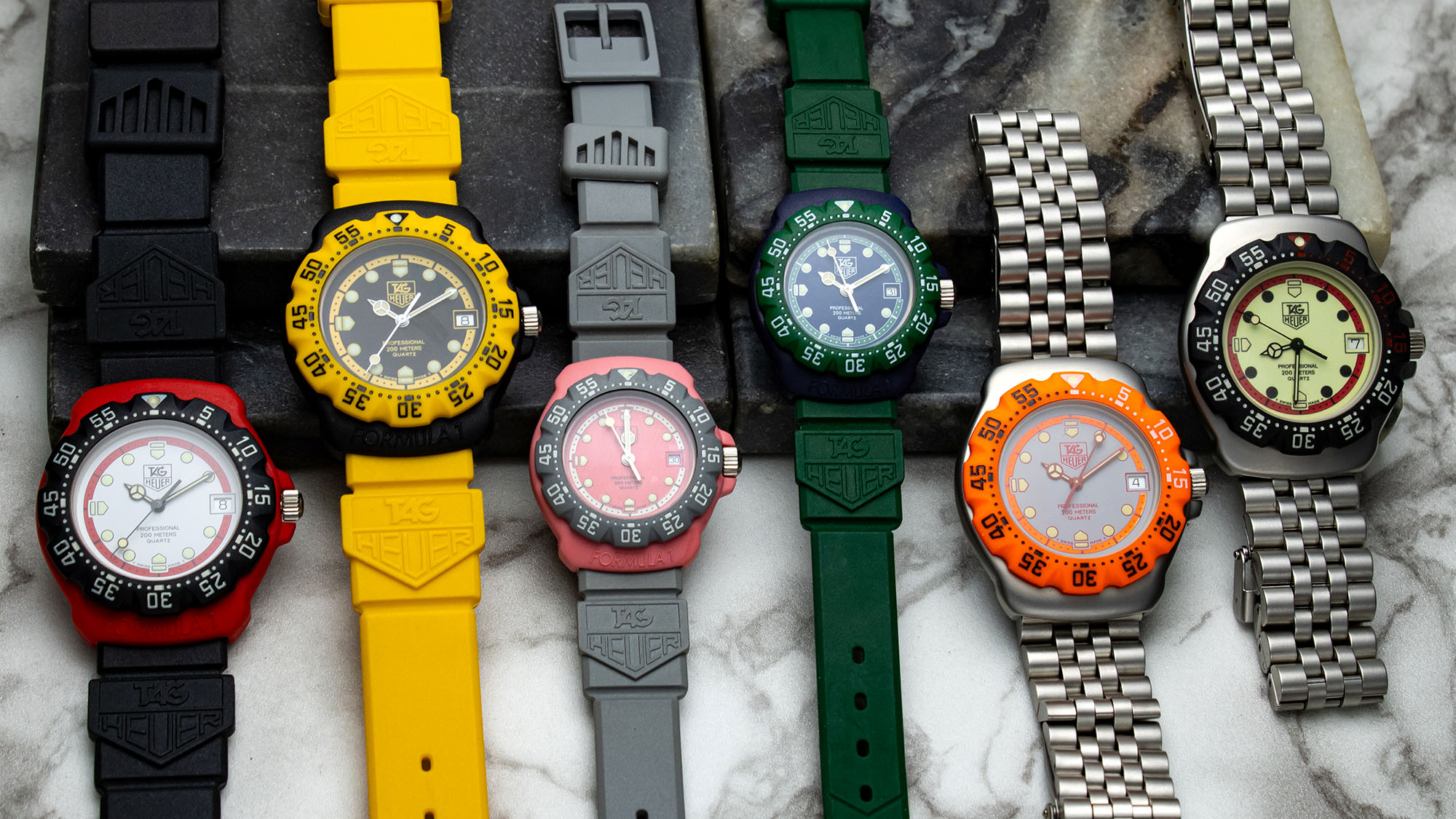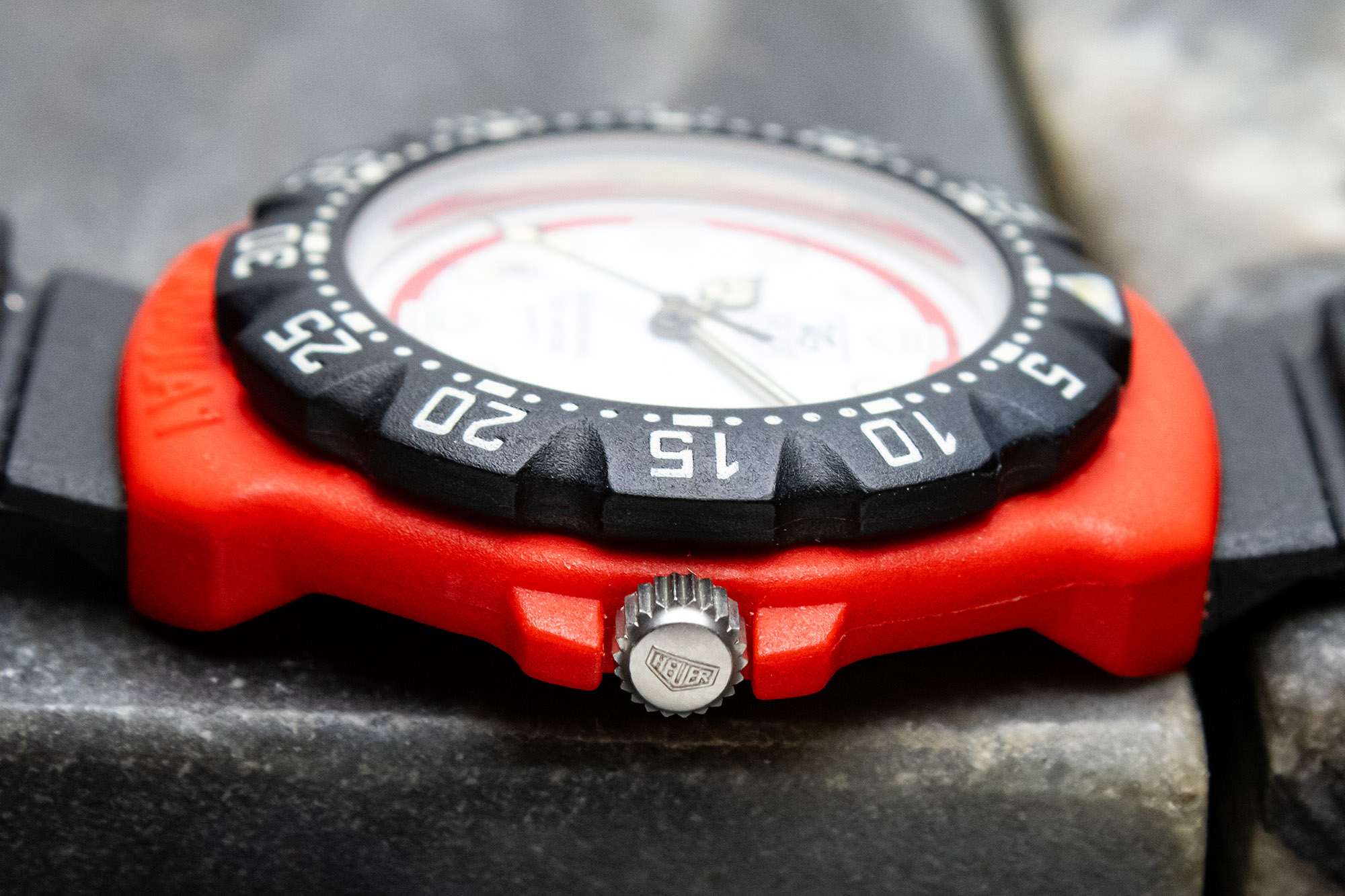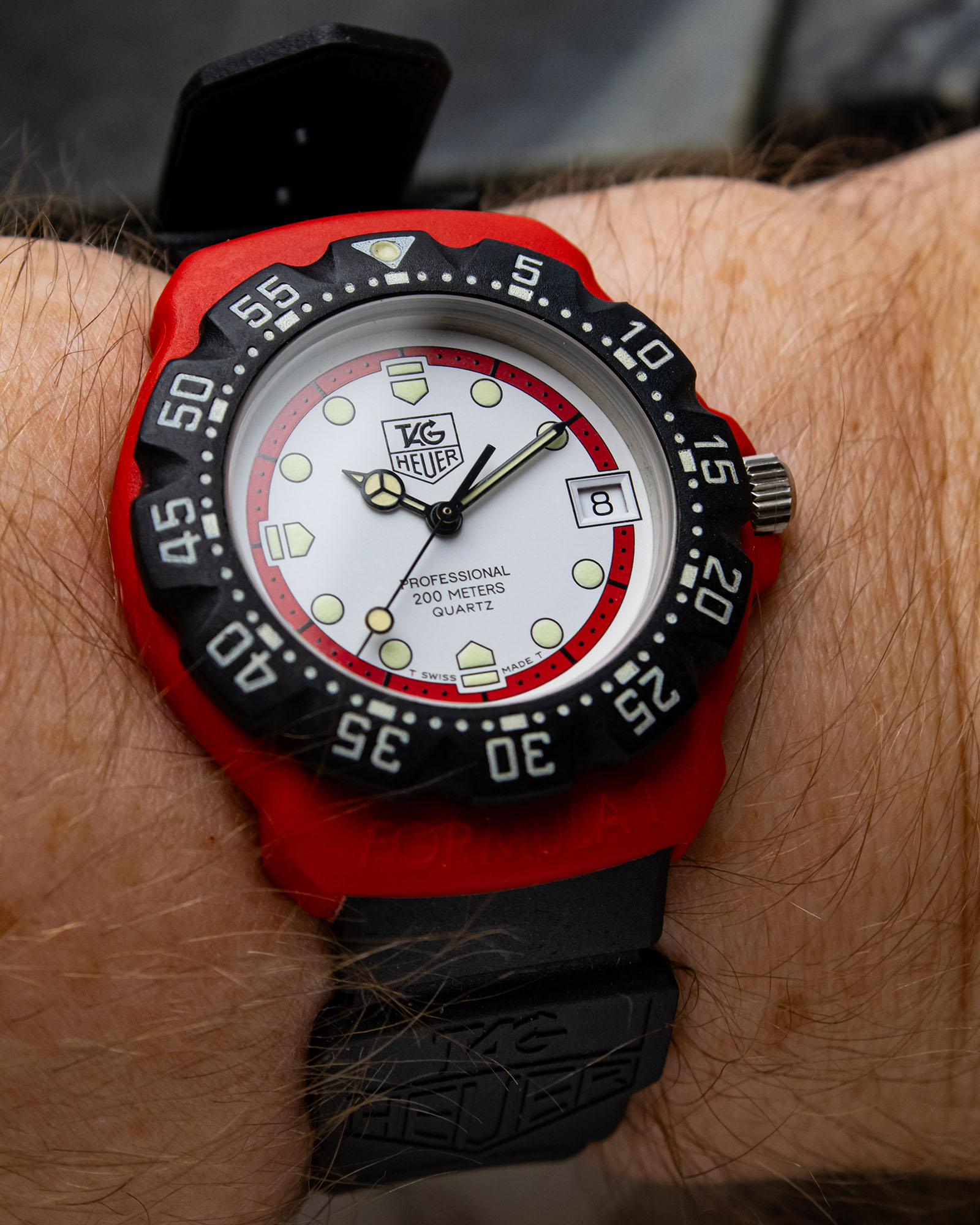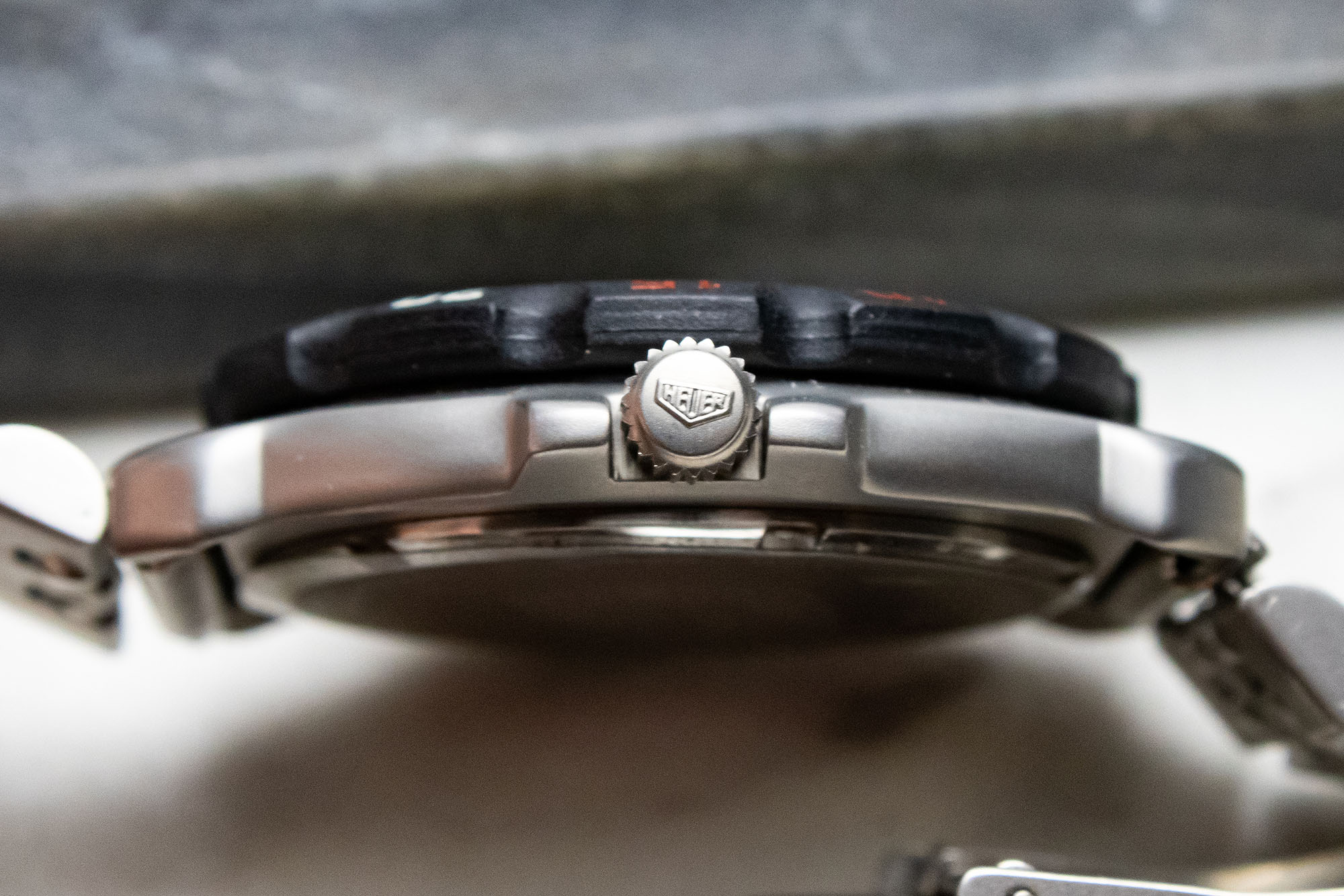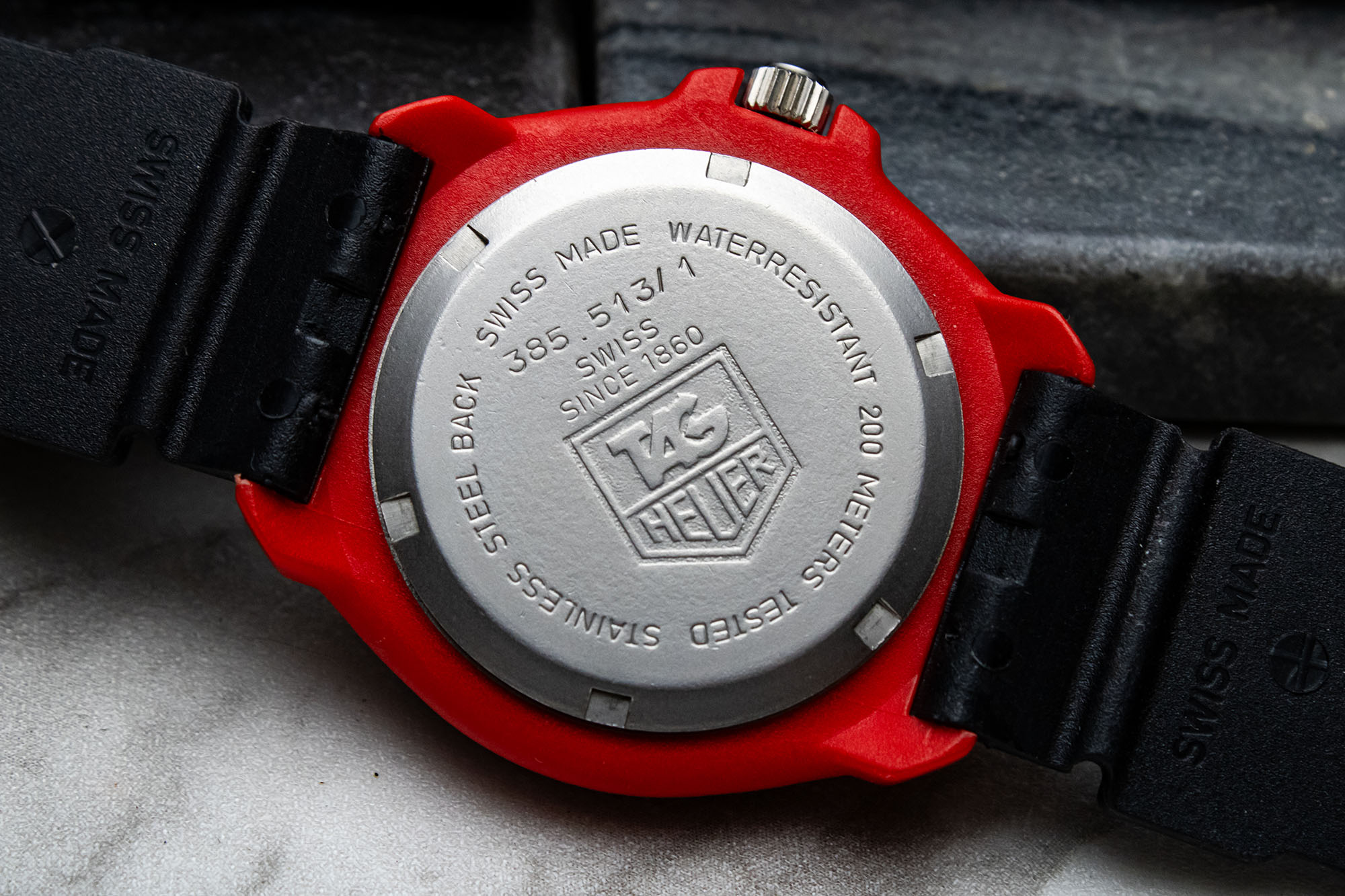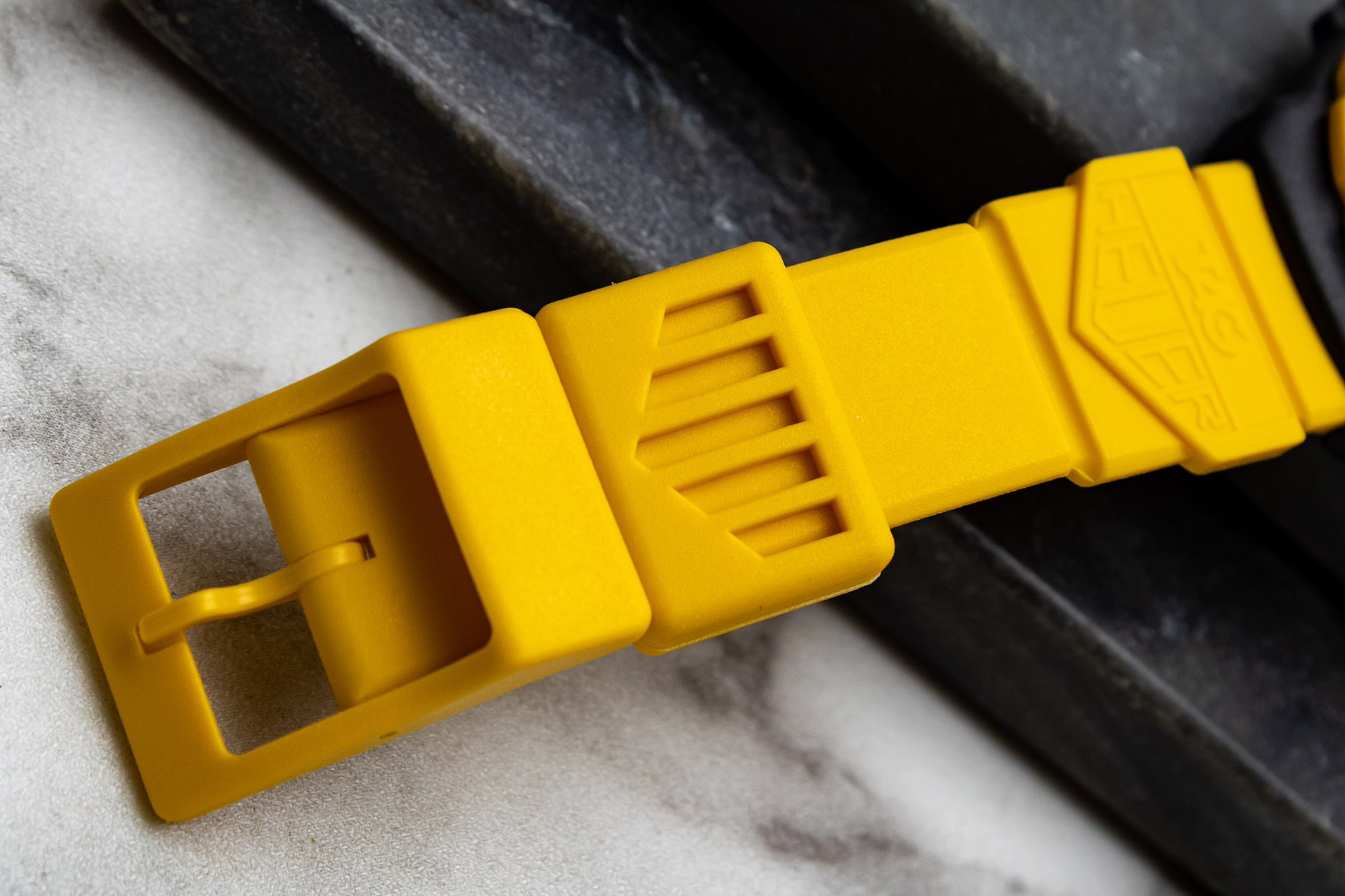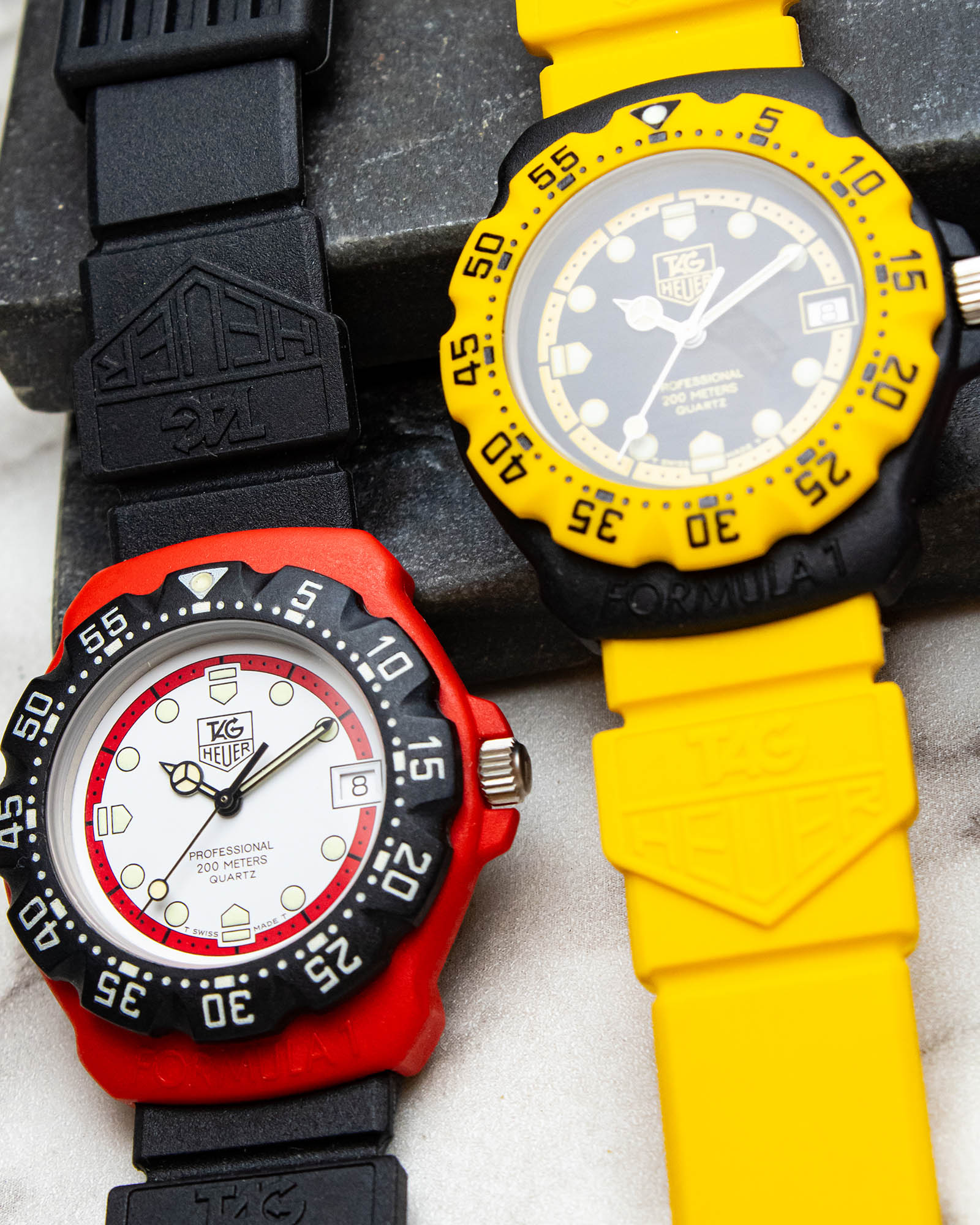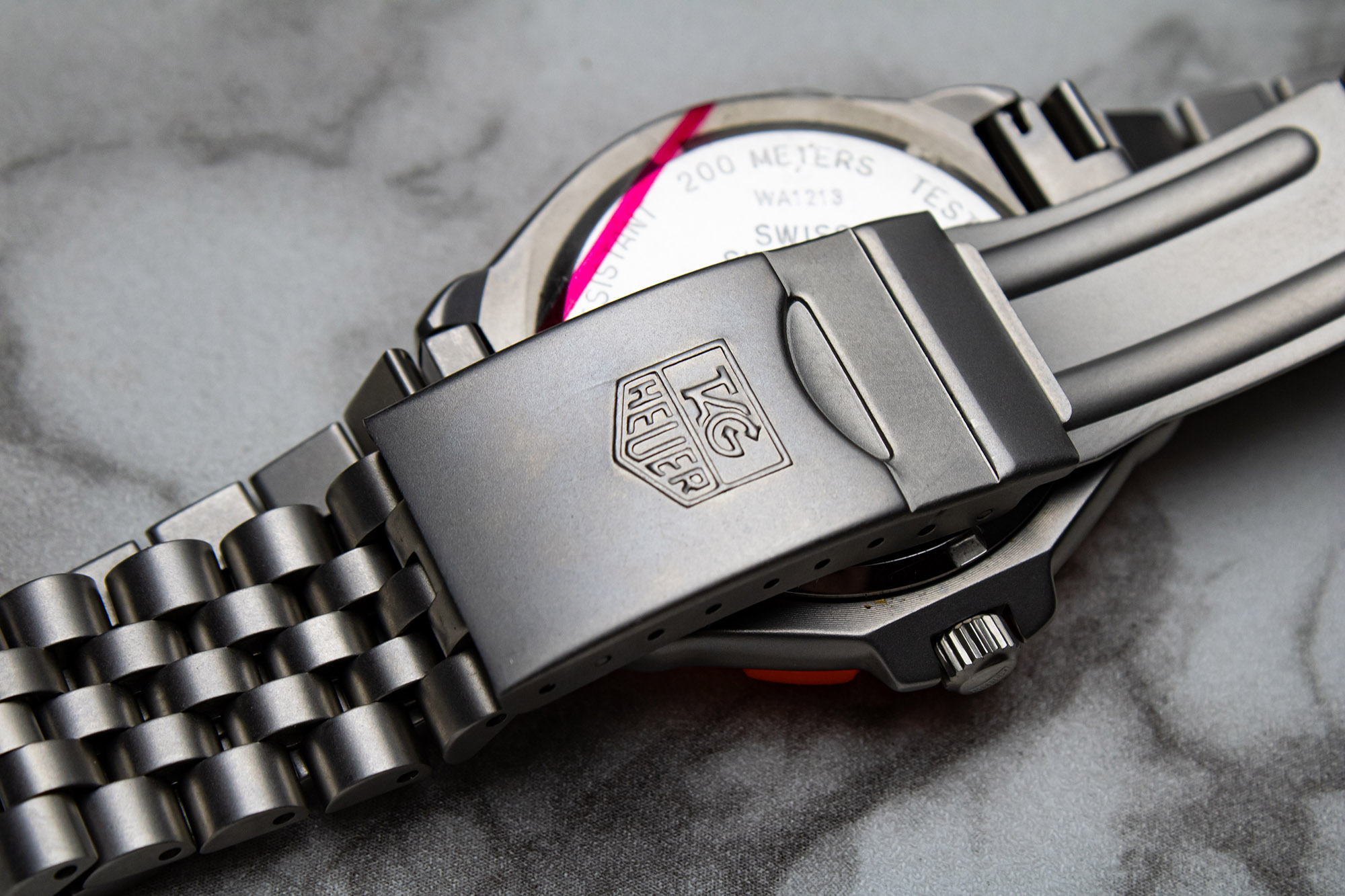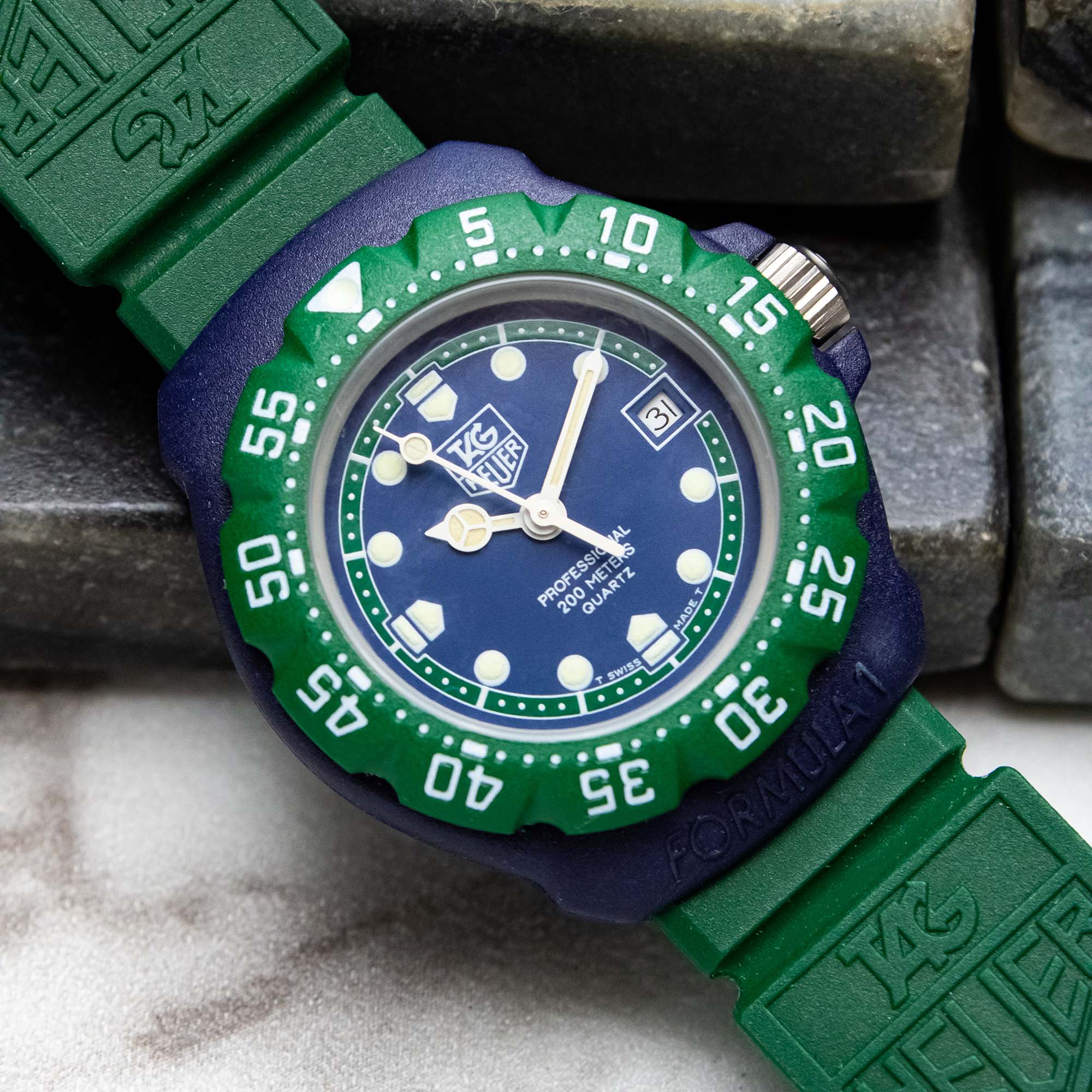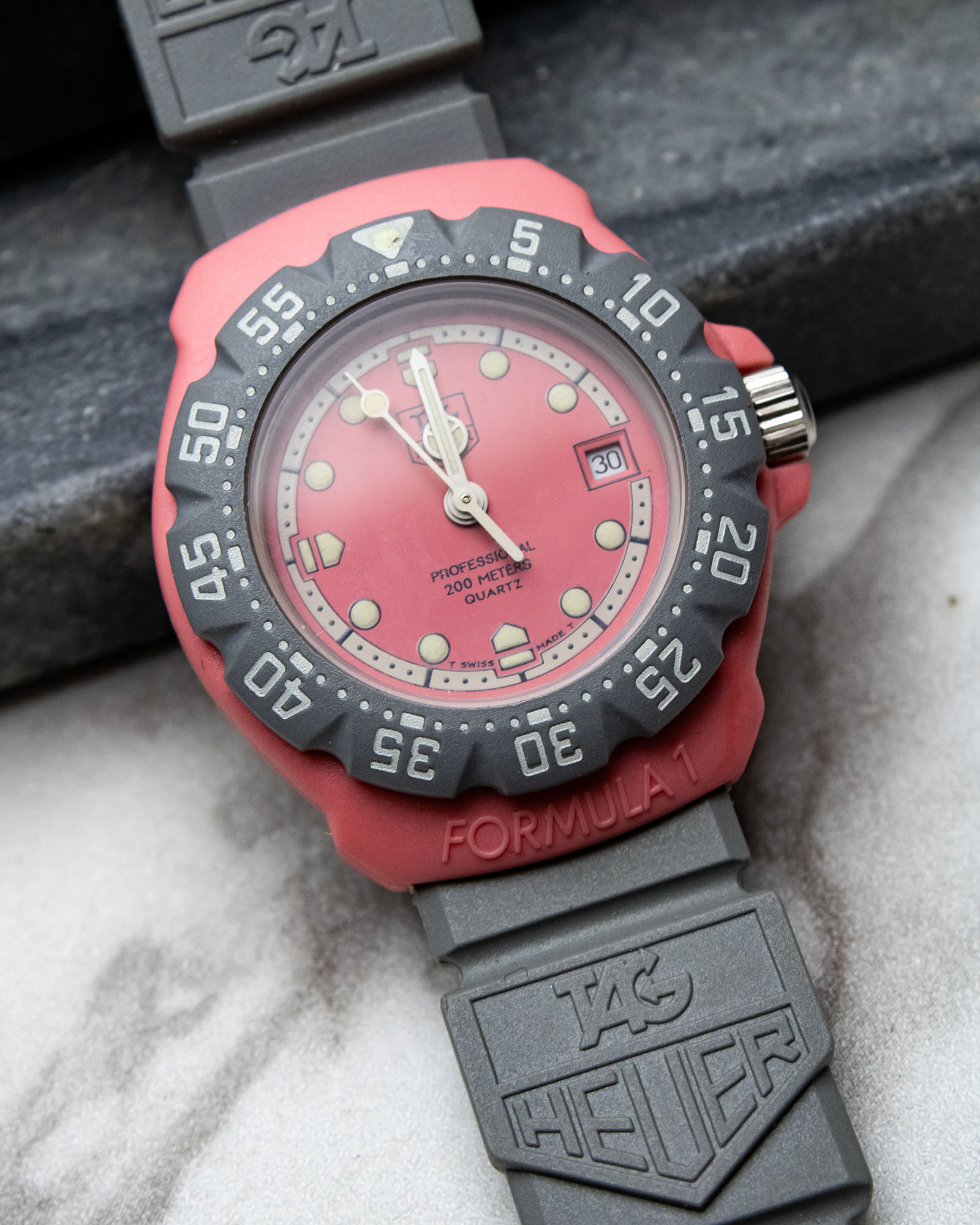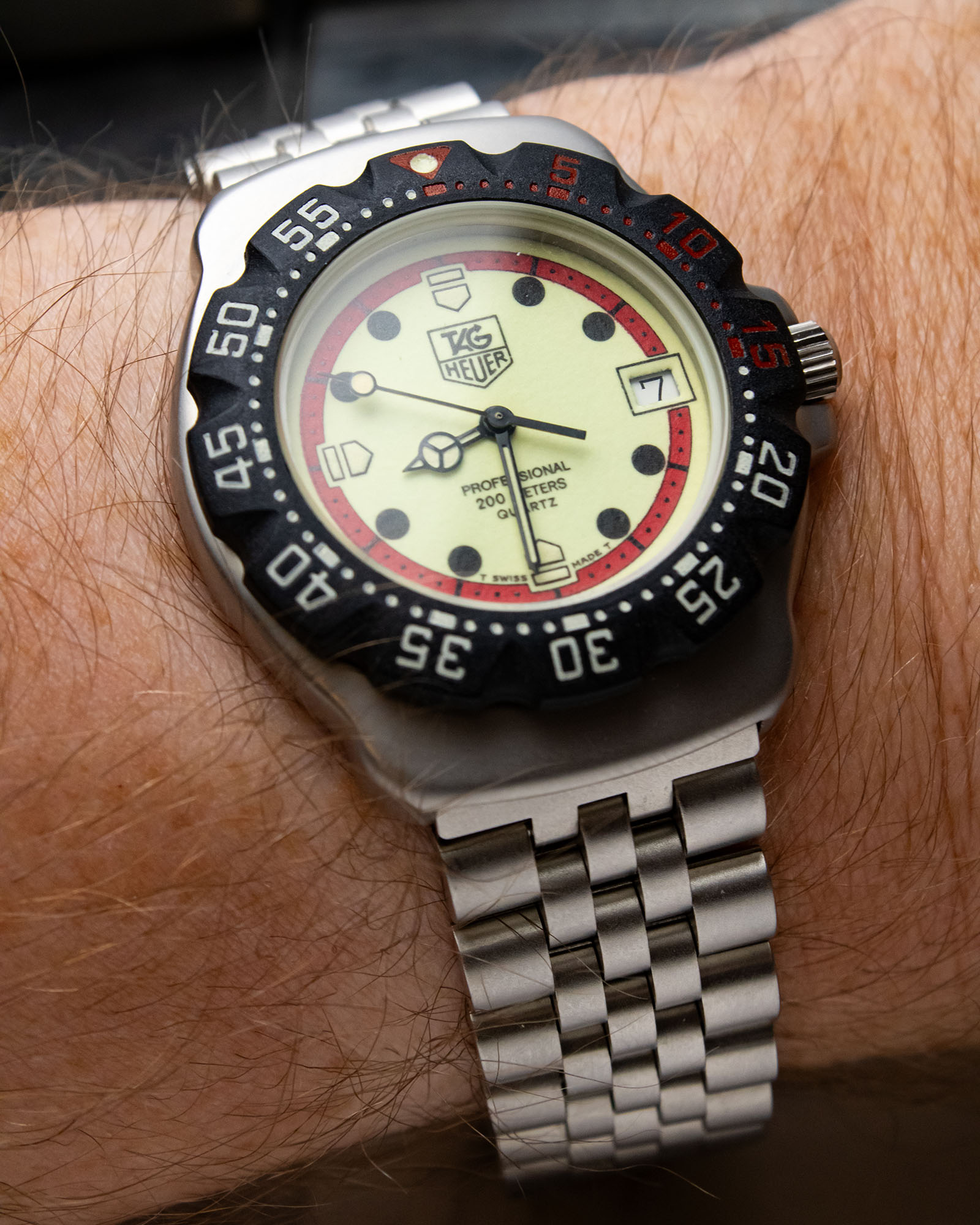 Author’s Note: Special thanks to TAG Heuer Heritage Director Nicholas Biebuyck and the brand’s heritage collection for loaning these museum pieces, as well as providing backstory on the line, without which this article would not have been possible.
Author’s Note: Special thanks to TAG Heuer Heritage Director Nicholas Biebuyck and the brand’s heritage collection for loaning these museum pieces, as well as providing backstory on the line, without which this article would not have been possible.
Regardless of one’s personal opinion on the watches themselves, it’s difficult to argue against the Swatch x Omega Moonswatch (and the subsequent Swatch x Blancpain Scuba Fifty Fathoms) as some of the most influential and important watch releases in the past few years. While these releases might have been successful in introducing sneakerhead-style hype culture into the watch market and have proven to be sales juggernauts for all the brands involved, the basic idea of creating affordable, colorful entry points into prestigious legacy watch brands for new consumers is not a new one. Back in 1986, the first-generation TAG Heuer Formula 1 line ushered in a new era for TAG Heuer, revitalized sales, and created a new generation of enthusiasts for the brand. While the Formula 1 line persists in TAG Heuer’s catalog to this day, the first generation models from 1986 to 1997 remain the favorite among collectors – and act as a surprisingly apt reflection of the current watchmaking landscape.
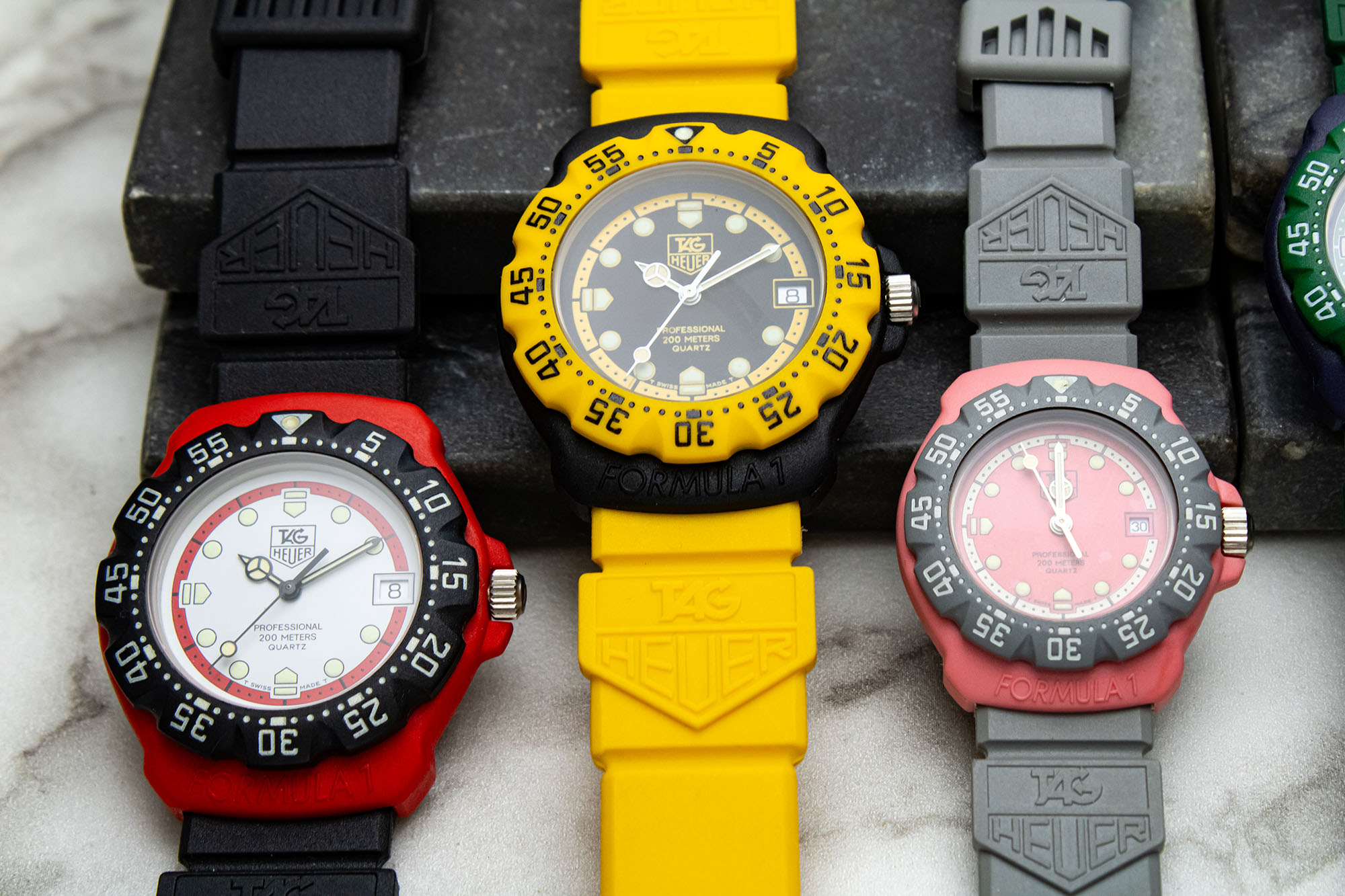
When French business mogul Mansour Ojjeh and his holding company Techniques d’Avant-Garde (shortened to TAG) completed its buyout of Heuer in early 1986, the historic watchmaker was in difficult financial straits. Although it had managed to survive the worst of the Quartz Crisis unlike many of its rivals, the late ‘70s and early ‘80s had seen Heuer’s lineup struggle to adapt to changing market trends. The introduction of dive watches to its lineup in 1979 had been a commercial boon for the brand, but the brand’s central Calibre 11/12/15 family of automatic chronographs were growing long in the tooth, and had fully phased out of the lineup by the end of 1985 after years of slowing sales.
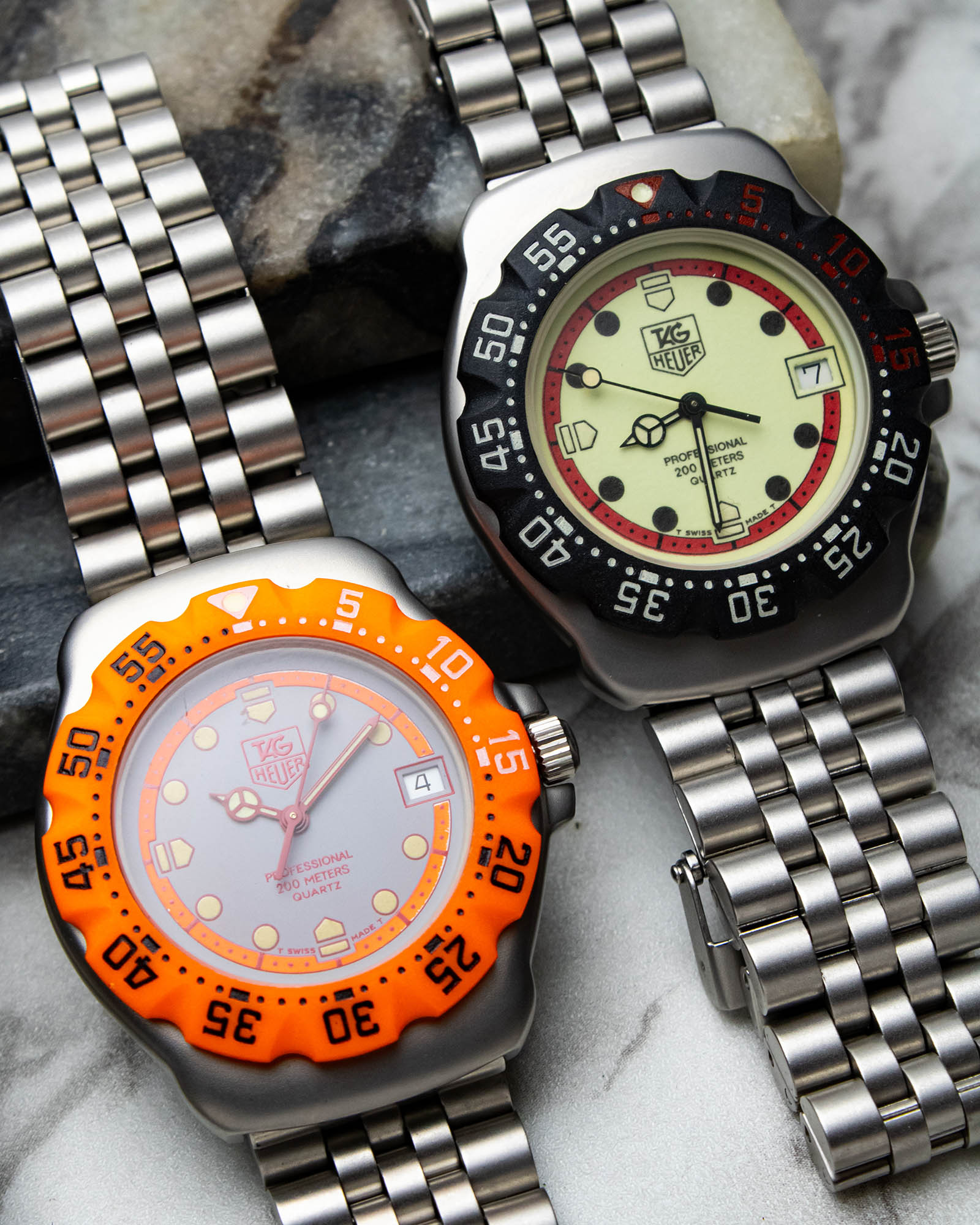
Although this legendary series of chronographs (including such racing-associated lines as the Monaco and Autavia) was on its way out, TAG was keen to put its own stamp on the brand, while highlighting its own motorsports credentials. In addition to purchasing Heuer and producing high-tech aircraft components, TAG was both part-owner and a technical partner for the McLaren Formula One team at the time, developing the TAG turbo engines that powered McLaren drivers Niki Lauda and Alain Prost to a run of Grand Prix dominance in the mid-‘80s. Around the same time, another player in the Swiss watchmaking industry had developed a massively successful formula for competing against the rising tide of affordable Japanese quartz timepieces. Launched in 1983, Swatch had become a cultural and financial titan by the mid-‘80s, selling record numbers of colorful resin-cased watches at bargain prices to a primarily youthful, forward-thinking demographic.
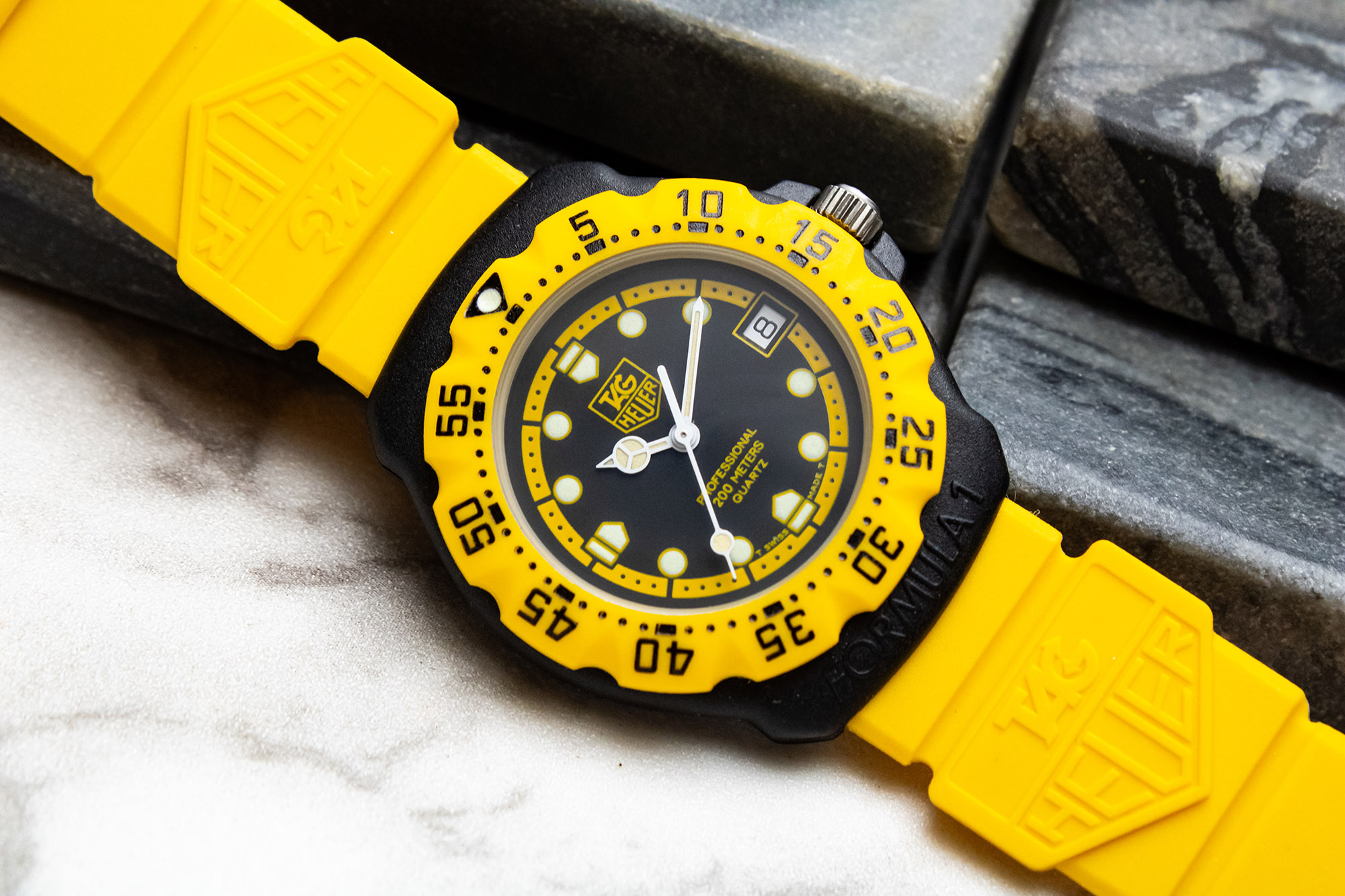
A marriage between the shared racing acumen of TAG and Heuer with the fun, affordable philosophy of Swatch seems like a natural move for the brand in hindsight. However, numerous higher-ups at TAG Heuer fought the initial Formula 1 project as potentially “cheapening the brand,” and executives at both TAG Heuer and its current LVMH parent company have tried to axe the line at numerous points since then. Despite this, the Formula 1 remains one of the most enduring and distinctive collections in TAG Heuer’s history.
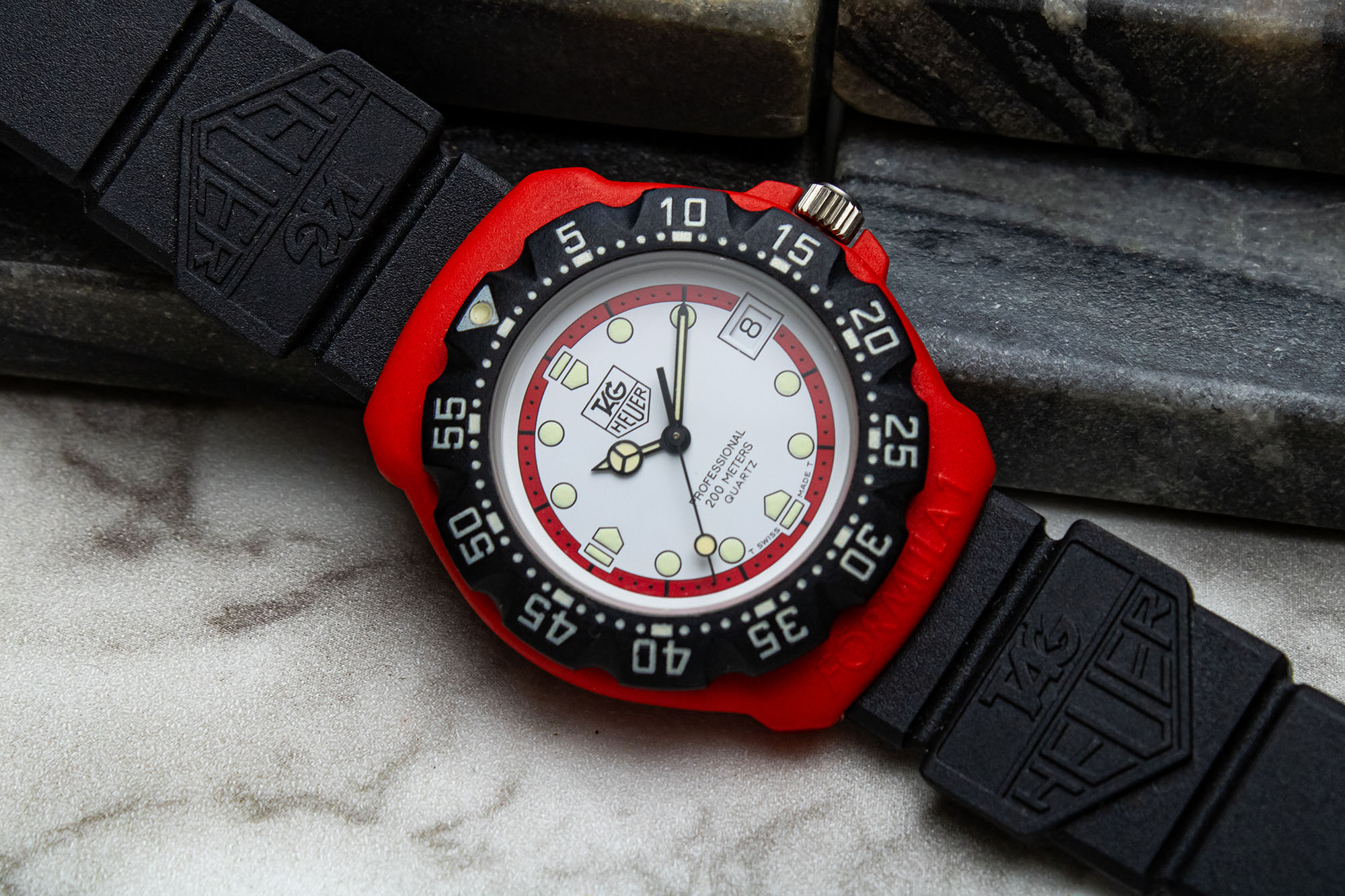
Designed by Eddy Burgener and initially released in an array of vivid, playful colors, the first-run TAG Heuer Formula 1 seemed to catch the zeitgeist of the mid-‘80s perfectly. The brightly hued matte fiberglass cases (matte-blasted stainless steel cases would be added to the lineup one year later in 1987) were ultra-lightweight, softly rounded, and vaguely diver-esque, with hooded lugs, small crown guards, and chunky, gear-toothed unidirectional dive bezels. Unlike some modern bioceramic equivalents though, the Formula 1 was a genuinely capable sports watch under its colorful façade, sporting a dive-ready 200 meters of water resistance thanks in part to a screwdown crown in stainless steel (it’s worth noting as well that some of these crowns are artifacts of TAG Heuer’s transitional period, sporting the older Heuer shield emblem). However, even by the diminutive standards of the mid-80s, and today’s vintage-focused trend toward smaller cases, the first-generation Formula 1s are small watches. The full-size models measure in at a diminutive 34mm wide, while the smaller variants are only 28mm wide. While it may make these watches a more difficult proposition for larger-wristed enthusiasts, it also made the early Formula 1 a unisex design, while also making it attractive to one of its key new demographics. Part of the reasoning behind the Formula 1 line in the first place was to attract a younger, more style-conscious clientele to the larger TAG Heuer ecosystem, and naturally, that includes teenagers. With its smaller size suitable for thinner wrists, hassle-free quartz movements, and low price point, it’s no surprise that the Formula 1 became the first watch purchase for countless teenage and young adult enthusiasts growing up in the ‘80s and ‘90s, and many of those young buyers went on to become lifelong fans of the brand.
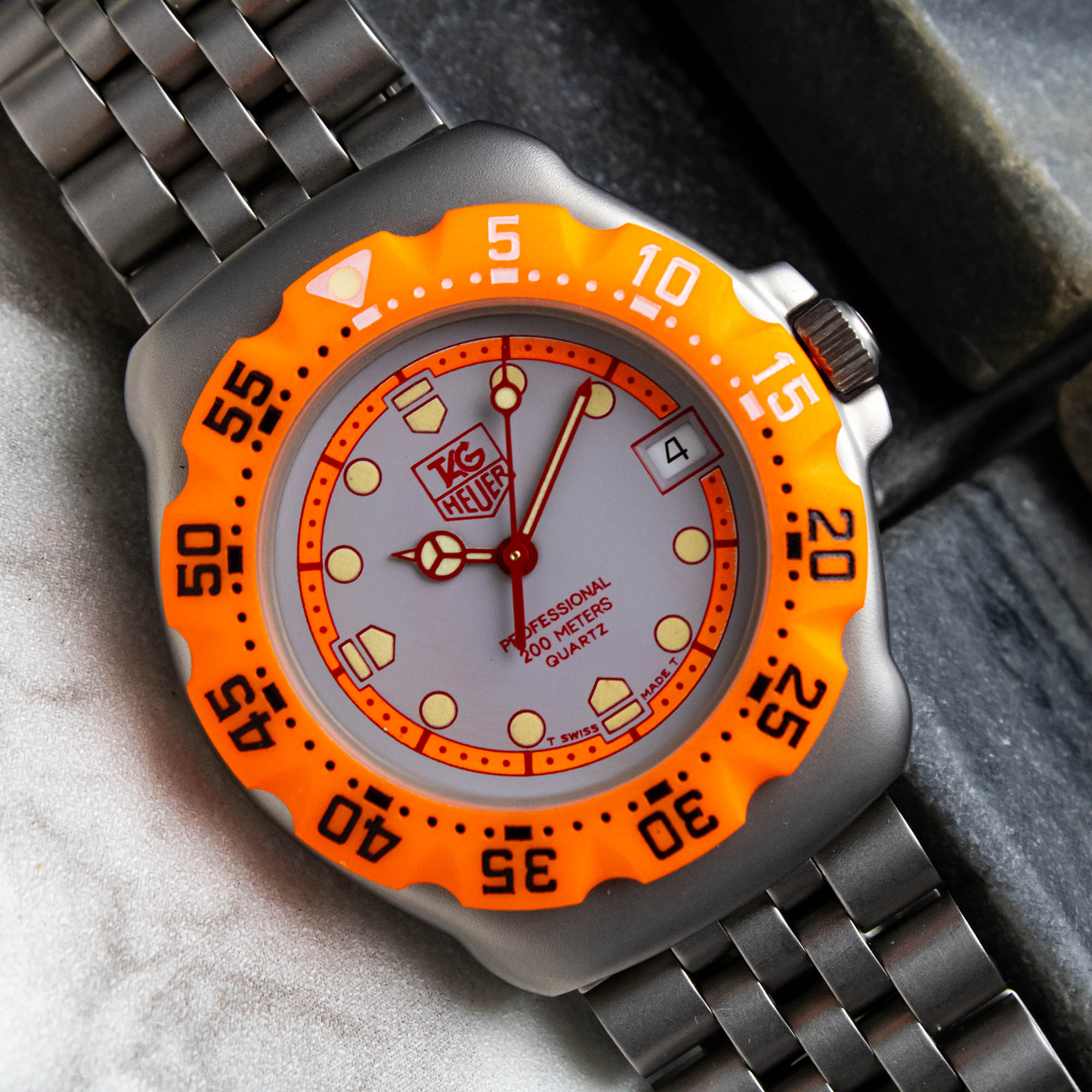
The dials of the initial TAG Heuer Formula 1 collection are an extension of this fun, youth-oriented, but functional design philosophy. Like the cases, there’s an emphasis on color here. Black, white, gray, pink, and fully luminous dials all make an appearance here, with further colorful minutes scales in blazing red, orange, yellow, green, and white. Despite the vivid presentation, the basic layout is a relatively classical dive watch design, with Mercedes hands and round printed indices for the hours. As this was the beginning of the new TAG Heuer nameplate, though, designer Eddy Burgener made the thoughtful decision to prioritize the brand’s new logo, incorporating the new TAG Heuer shield silhouette into the markers at 12 o’clock, 6 o’clock, and 9 o’clock.
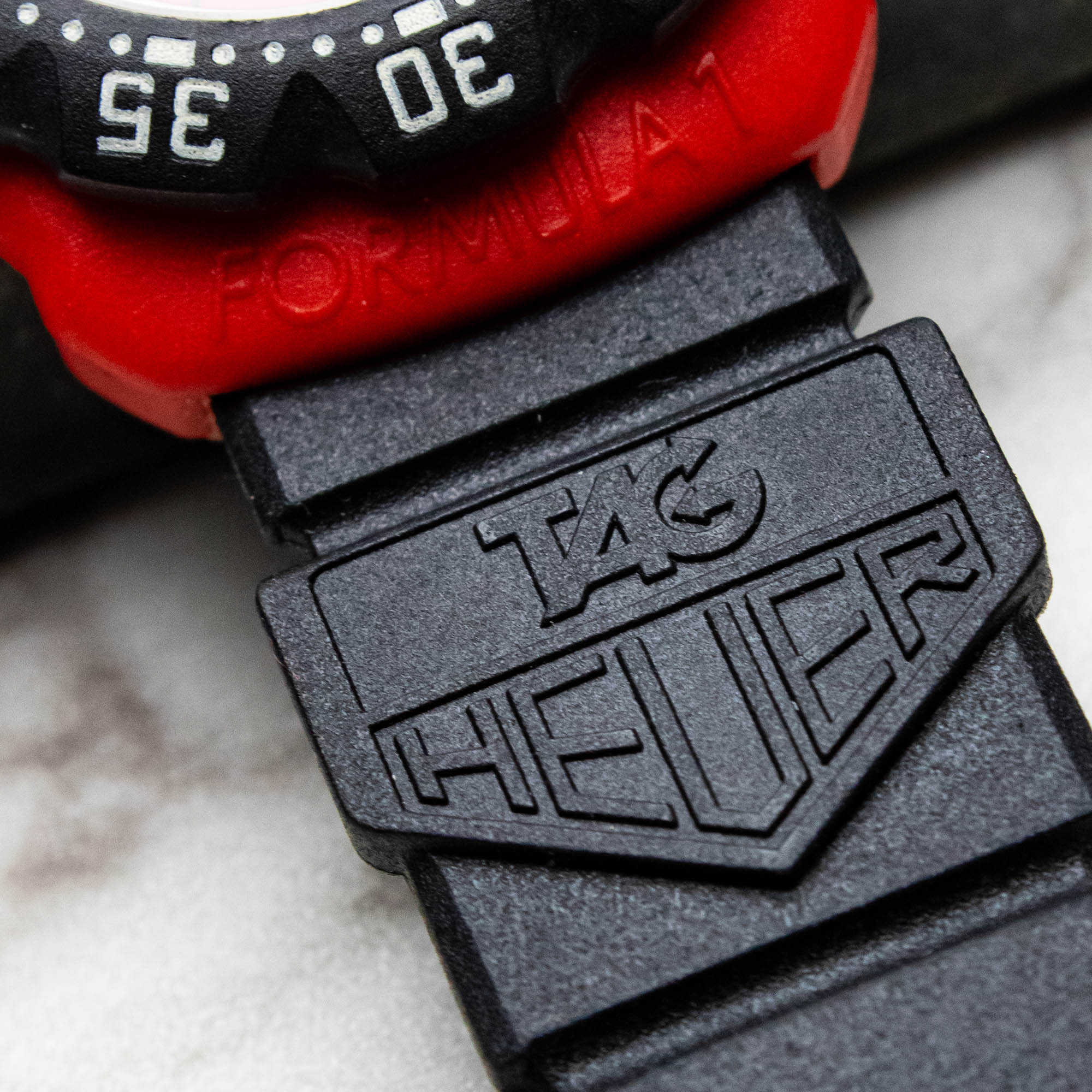
Of course, the focus on highlighting the then-new TAG Heuer brand reaches its pinnacle with the Formula 1’s strap selection. The stainless steel variants are fitted with fully brushed jubilee-style bracelets in stainless steel, but the fiberglass models truly steal the show here. Each model is paired to a soft plastic strap featuring oversized TAG Heuer shield emblems, rendered in an array of bright color options including yellow, green, black, gray, and red. TAG Heuer also doubles down on making these watches accessible to smaller, younger wrists with these straps. Each strap features notched ends, designed to be cut to eliminate excess strap overhang. When combined with the bright cases and dials, these watches carry an outsized visual punch on the wrist that belies their small proportions. It’s not the most refined wearing experience in TAG Heuer’s extensive back catalog, but it’s immensely fun. In keeping with the affordable, durable, low-stress philosophy behind the line, the first-run TAG Heuer Formula 1 is powered by a variety of quartz movements from Ronda and ESA. Midway through the first generation, most of the line transitioned to the ETA 955 family of quartz movements, but Ronda-powered examples can be found dating well into the ‘90s.
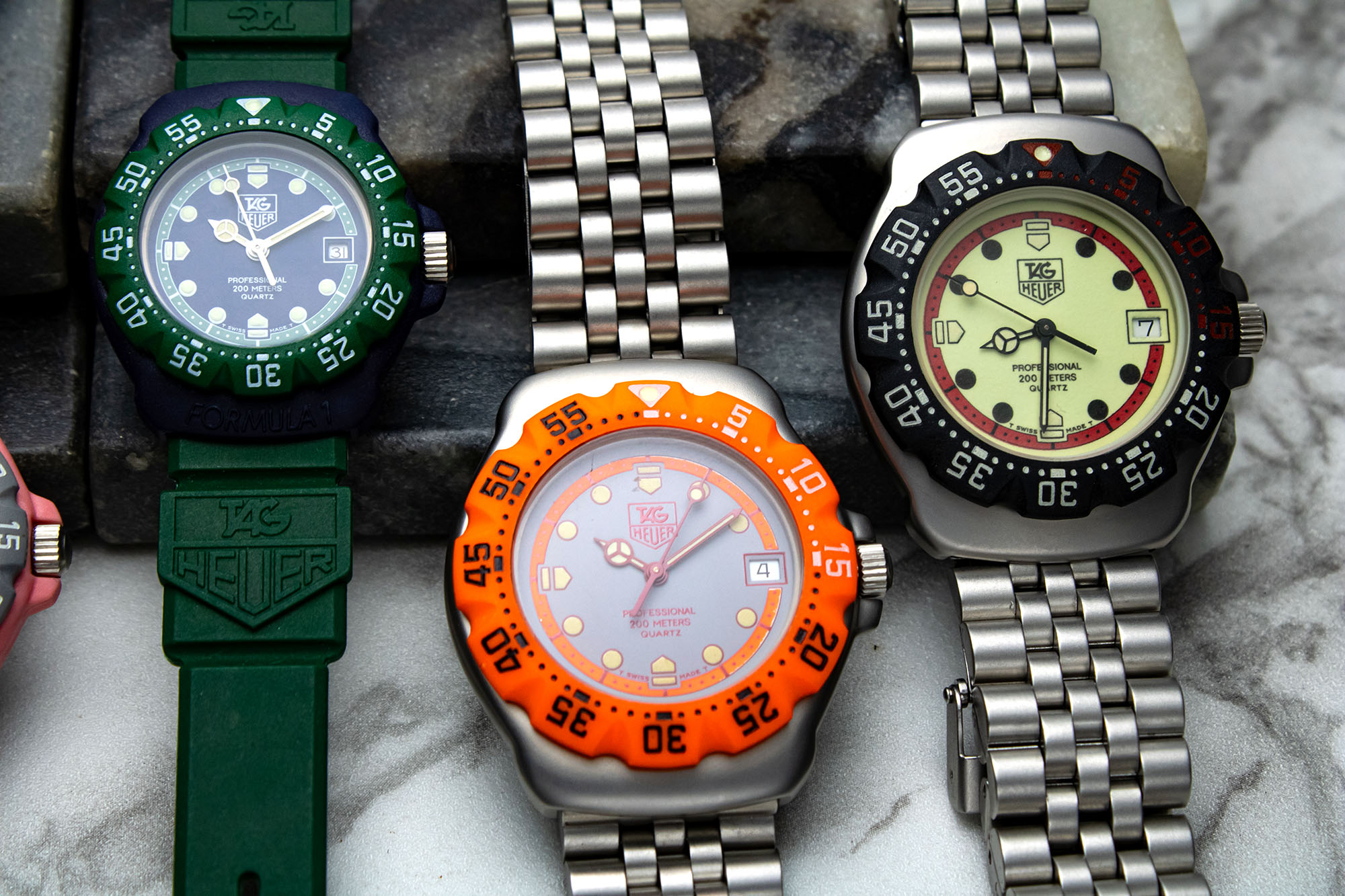
It’s also worth noting that market momentum on the first-generation TAG Heuer Formula 1 is building. Our colleagues at eBay have provided us with a suite of statistics about the Formula 1’s secondary market performance in recent years, and the telemetry paints a clear picture of the current trend surrounding these watches. From 2018 to 2022, the number of ’80s-era TAG Heuer Formula 1 models sold through eBay rose a massive 75 percent, compared to a 17 percent growth for the Formula 1 line as a whole on eBay over the same period. Not only are more first-generation Formula 1 models circulating to enthusiasts, the watches themselves are rapidly gaining value. Models marked on eBay as “Original TAG Heuer Formula 1” watches sold for 45 percent more on average between January and July 2023 than they did for the same period in 2022. A 45 percent price jump in a single year is an impressive climb for any vintage watch model, but seeing this sort of growth with a fiberglass-cased low-cost quartz watch is even more remarkable.
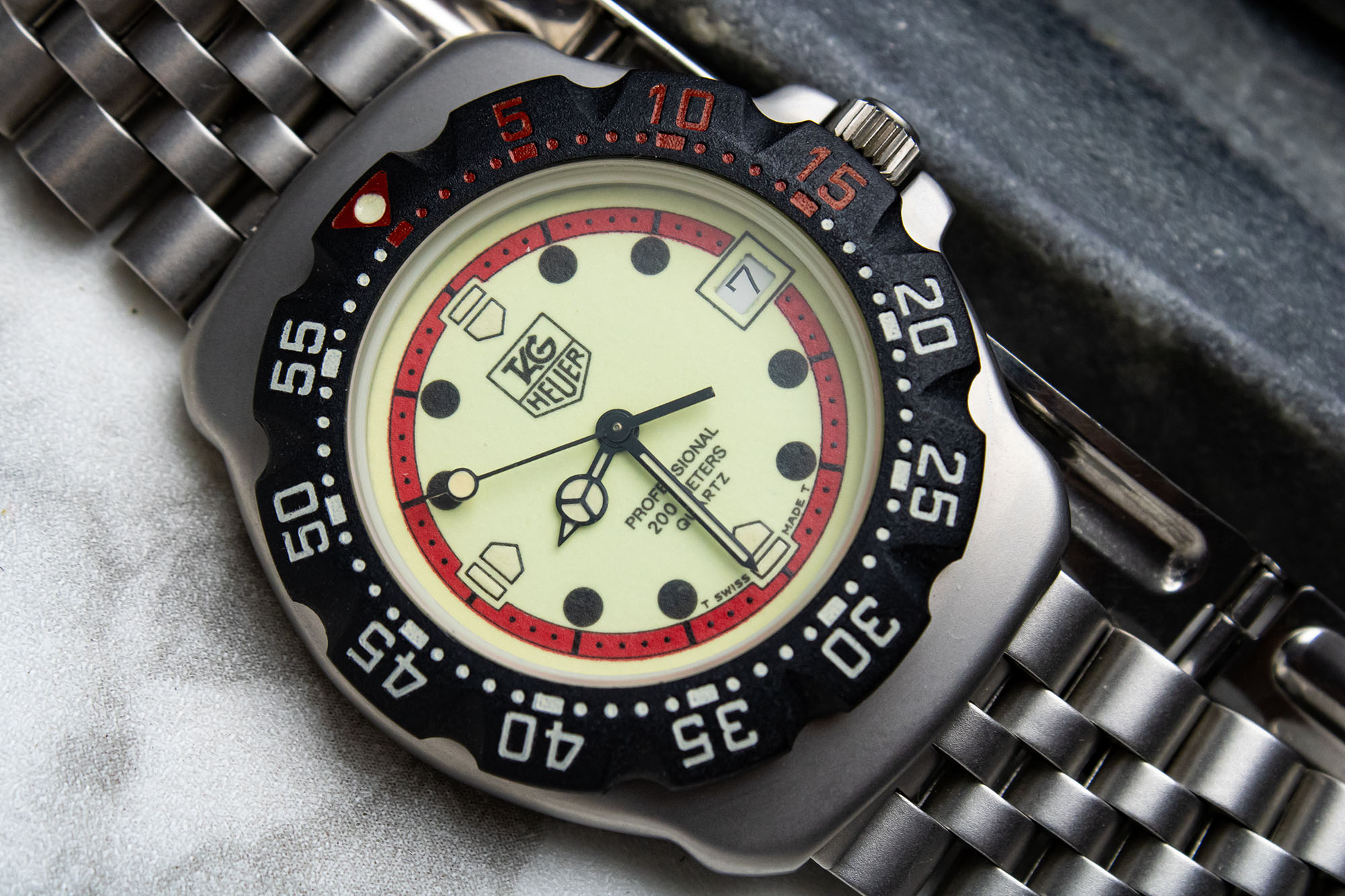
With their low-cost, high-energy ethos and a pivotal role in defining TAG Heuer as a company, it’s easy to see why the first-generation TAG Heuer Formula 1 maintains a dedicated, loyal fanbase to this day. Beyond that, though, this is a collection that feels impressively timely in a post-Moonswatch horological landscape. While the Formula 1 line remains a staple for TAG Heuer, the watch industry is approaching another major crossroads moment, and a revival of the original colorful-but-capable Formula 1 could be just the thing to inspire another new generation of TAG Heuer fans. Time will tell if this comes to pass, but in either case, the original Formula 1 is a enjoyable, eminently collectible series that somehow stands as both a perfect ‘80s time capsule and a series decades ahead of its time. To learn more about the TAG Heuer Formula 1 and its current lineup, please visit the brand’s website.

